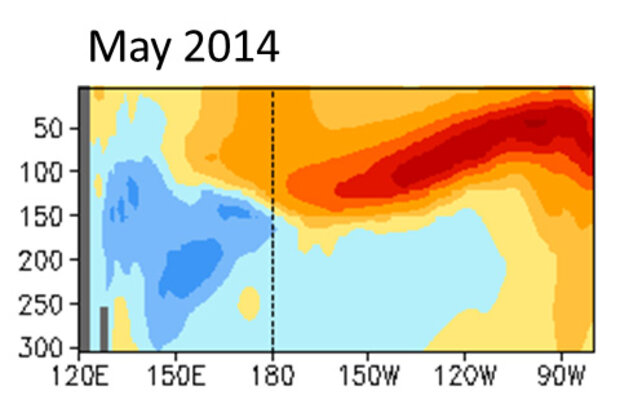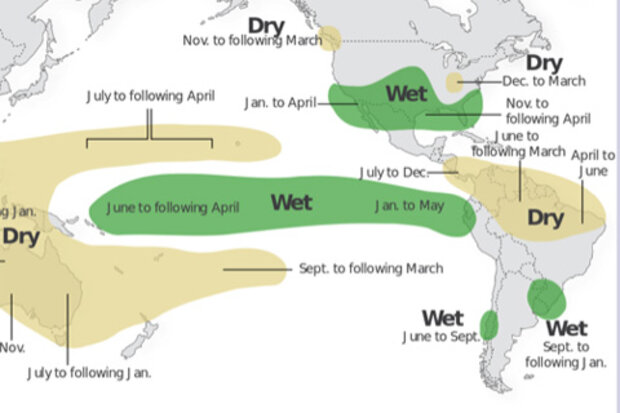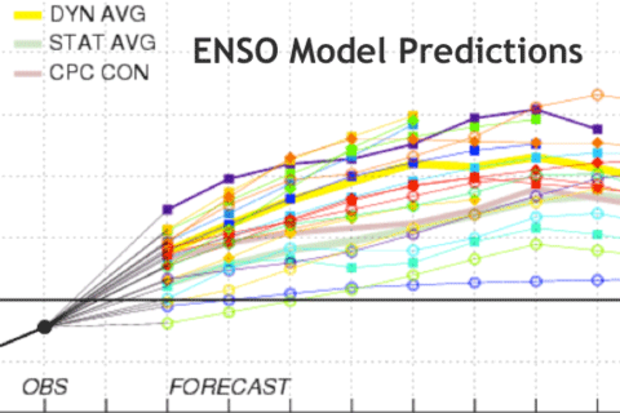Blogs
Today, the Climate Prediction Center (CPC) released the June ENSO Diagnostic Discussion. Chances that an El Niño will occur by summer are above 70%, and reach 80% by the fall. Sea-surface temperature anomalies increased across all the Niño index regions in May; the latest weekly value of the Niño3.4 index is now above +0.5°C. Tropical rainfall across Indonesia and the Pacific remain close to average, but forecasters are confident that the atmosphere will begin to respond to the ocean and El Niño will develop, likely in the next few months.
Recently, there’s been a lot of speculation about how strong this El Niño will be, especially considering the strong westerly wind bursts in late…
Read article
With the approach of the 2014 hurricane season and the strong potential for El Niño to develop during the next few months, the effect that El Niño has on both the Atlantic and Pacific hurricanes seasons is worth exploring. The hurricane impacts of El Niño and its counterpart La Niña are like a see-saw between the Pacific and Atlantic oceans, strengthening hurricane activity in one region while weakening it in the other.
Simply put, El Niño favors stronger hurricane activity in the central and eastern Pacific basins, and suppresses it in the Atlantic basin (Figure 1). Conversely, La Niña suppresses hurricane activity in the central and eastern Pacific basins, and enhances it …
Read article
If you pick up a stack of journals on ENSO you will quickly discover that most scientists define ENSO based on “seasons” ( 3-month averages) of oceanic and atmospheric indicators in the tropical Pacific. Why is that?
See this figure of the weekly sea surface temperature (SST) anomalies (departures from average) in the Niño-3.4 region, an area in the east-central equatorial Pacific Ocean? The values wobble around a bit.
In fact, if you were to look at weekly values based on atmospheric pressure anomalies at the surface (the Equatorial Southern Oscillation index), they bounce around a lot more. This time series is clearly “noisy.”
…
Read article
ENSO arises from changes across the tropical Pacific Ocean. So why does ENSO affect the climate over sizable portions of the globe, including some regions far removed from the tropical Pacific Ocean? Does the strength of ENSO matter for global impacts?
ENSO affects the sea surface temperature (SST) in regions where fishing is a major industry to some countries. A prominent example is the anchovy fishing routinely done off the northwest coast of Peru. When El Niño occurs, the warmed waters become unfavorable for the fish, which flee for cooler waters, resulting in poor harvests that are detrimental to the Peruvian economy.
But the abnormal tropical Pacfic SSTs are only the b…
Read article
The ENSO Diagnostic Discussion issued by the CPC and the IRI on May 8, 2014, continues the El Niño watch first announced in March, saying “the chance of El Niño increases during the remainder of the year, exceeding 65% during the summer.” Observed conditions in the Pacific and several forecast tools are lending confidence to the forecast, but substantial uncertainty remains, including when the El Niño would start and how strong it will be. Here, we’ll take a quick look at where both the confidence and the uncertainty are coming from in this forecast.
Observed conditions have been trending consistently from neutral toward El Niño-like (warm) conditions for the past few months. A strong dow…
Read article




